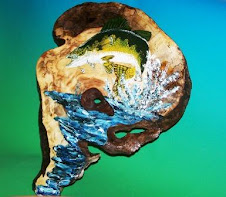Tuesday, April 29, 2008
North American Wildlife Conservation Model (cont’d)
3 Democratic Rule of Law
Today all users of our wild resources are governed by the democratic rule of law. All stakeholders in our wild resources have access to those resources within a framework of laws, rules, and ethics. Imagine how things would look today if the decision had been made to follow the European model where a select and elite few made the rules; often to the detriment of the public at large.
4 Hunting Opportunity For All
One option available to our forefathers was to ban hunting on any scale to allow wildlife to re-establish naturally. That tact would have ensured the endangerment of many species that we all enjoy today. Without the billions of dollars pumped into conservation efforts by hunters and fishermen wildlife conservation in North America would collapse.
Indeed it is this tenant that has encourages wholesale participation and financial contributions to wildlife management throughout North America.
5 Non-frivolous Use
Although somewhat subjectively interpreted in was the intent of the model to define non-frivolous use of wildlife as anything other than harvesting for food or fur, or for self-defense or protection of property. This ensured that wild animals could not be harvested on a speculative, for-profit basis by market hunters and that migratory birds could not be killed for a handful of feathers to festoon women’s hats.
6 International Resources
Wildlife doesn’t recognize borders: state, provincial, or national borders simply don’t exist in the world of wildlife. Those that developed the model realized that developing conservation concepts and practices in one region or country would have little impact once wildlife crossed a border into another jurisdiction. This understanding formed the basis of legislation like the Migratory Bird Protection Act of 1916. Without this international legislation many species of waterfowl would likely now be extinct.
7 Scientific Management
Fish and wildlife ministries throughout North America follow a methodology for wildlife and habitat management based on scientific research. This eliminates the potential for resources to be guided (or misguided) by emotion, rhetoric, and private agenda. Management of resources is, for the most part, objective and decisions made based on scientific study and evaluation.
This series will be continued and is proudly brought to you by www.distinctnorthernart.com . Visit us and browse our wide variety of original wildlife art and etched glass wildlife mirrors.
Tuesday, April 1, 2008
North American Wildlife Conservation Model (cont’d)
The model is built around seven guiding principles:
1. Public Trust
2. Prohibition on Commerce of Dead Wildlife (market hunting).
3. Democratic Rule of Law.
4. Hunting Opportunity for All.
5. Non-frivolous Use.
6. International Resources.
7. Scientific Management.
These seven principles conceived over 100 years ago underpin all of our modern day wildlife management and conservation laws, and guide the conservation ethics of all users of our wildlife resources. As we dig deeper you will see how these principles provide for the unbiased use and conservation of all North American wildlife and their habitat.
Shane http://www.conservationforce.org/directorsmahoney.html speaks eloquently and passionately as he discusses the “Seven Sisters (or Pillars)” of the wildlife model. So let’s examine each principle in more detail.
1 Public Trust
Because ownership of wildlife in North America is for the most part vested in various levels of government – who were elected as the direct representatives of you and me (the public) – all residents have a right to unfettered access to, and enjoyment of, wildlife.
The principle of “public trust” was adopted to ensure that wildlife on the North American continent did not fall into private ownership as was the tradition in most of Europe. In Europe most of the land and wildlife was (and often still is) owned by the aristocracy or very affluent. The average person was denied the right to hunt, fish, or even to enjoy the presence of wildlife.
I guess this denial of access to the public did serve as a form of conservation, but our forefathers were determined to establish a model that would ensure access to all.
2 Prohibition on Commerce of Dead Wildlife
Uncontrolled market hunting fueled by an insatiable public appetite for wild game is what, more than any other single factor, nearly led to the eradication of many wildlife species on the North American continent.
The adoption of stringent conservation laws, including the banning of “market hunting” ensured survival of the many wildlife species we enjoy today.
This series will be continued and is proudly brought to you by www.distinctnorthernart.com . Visit us and browse our wide variety of original wildlife art and etched glass wildlife mirrors.
.jpg)



.jpg)